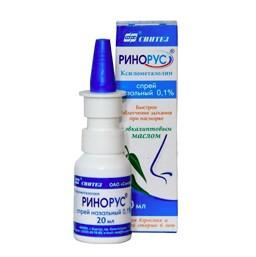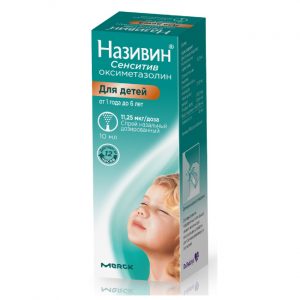Description
Description
Powder from white to yellowish white with easily disintegrating agglomerates, with the smell of blackberry. May have a slight sulfuric odor.
Indications
Acute and chronic respiratory diseases associated with the formation of a viscous, difficult to separate bronchial secretion (as an expectorant): bronchitis, tracheitis, bronchiolitis, pneumonia, bronchiectatic disease, cystic fibrosis, lung abscess, pulmonary emphysema, lung emphysema, atelectasis of the lung (due to obstruction of the bronchi with a mucous plug).
Inflammation of the middle ear (otitis media), acute and chronic sinusitis, rhinosinusitis (relieving secretion).
Removing viscous secretions from the respiratory tract in post-traumatic and postoperative conditions.
Contraindications
Hypersensitivity to acetylcysteine or other components of the
preparation hemoptysis, pulmonary bleeding
peptic ulcer of the stomach and duodenum in the acute stage
children under 18 years of age (for this dosage form) contains sorbitol), phenylketonuria (contains a source of phenylalanine aspartame).
With caution
a history of gastric or duodenal ulcer, asthma, obstructive bronchitis, liver and / or renal failure, histamine intolerance (long-term use should be avoided, since acetylcysteine has an effect on histamine metabolism, which can lead to symptoms of intolerance, such as headache, vasomotor rhinitis, itching), varicose veins of the esophagus, adrenal gland diseases, arterial hypertension.
Recommended use for
Inside. Powder from 1 sachet should be poured directly onto the tongue. The drug stimulates salivation, so the powder is mixed with saliva and is easily swallowed. The drug does not require drinking water. Powder for oral administration should not be chewed before swallowing.
Adults: 1 sachet once a day (equivalent to 600 mg of acetylcysteine per day).
Due to the high content of acetylcysteine (600 mg) in 1 sachet, the drug should not be used in children (it is recommended to use other dosage forms of ACC ® or another acetylcysteine drug).
Duration of treatment should be evaluated individually. With short-term colds, the duration of the course is 5-7 days, in the treatment of chronic diseases – up to several months (on the recommendation of a doctor).
Special instructions
Patients with asthma and obstructive bronchitis, acetylcysteine should be prescribed with caution under systemic control of bronchial obstruction. If the patient is not able to cough up effectively, it is necessary to drain or aspirate the secretion.
Cases of severe allergic reactions such as Stevens-Johnson syndrome and Lyell’s syndrome have been very rarely reported with acetylcysteine. If changes in the skin and mucous membranes occur, you should immediately consult a doctor, you must stop taking the drug.
You should not take the drug immediately before bedtime (it is recommended to take the drug before 18.00).
Effect on laboratory data. Acetylcysteine can affect the results of colorimetric determination of the concentration of salicylates in blood plasma. In urinalysis, acetylcysteine may affect the results of determination of ketone bodies.
Effect on the ability to drive vehicles, mechanisms
Acetylcysteine does not affect the ability to drive vehicles and work with mechanisms.
Composition
1 sachet contains:
active ingredient: acetylcysteine 600 mg excipients: glyceryl tripalmitate, polysorbate 65, sorbitol, xylitol, citric acid, sodium citrate, magnesium citrate, carmellose sodium, aspartame, Blackberry flavor ² ÑB ² Ñ (natural / natural liquid flavor ² ÑForest berry ² Ñ, code 5752 natural / identical to natural liquid flavor ² ÑBlackberry ² Ñ, code 5337 vanillin maltodextrin mannitol gluconolactone sorbitol silicon dioxide colloidal anhydrous magnesium carbonate), magnesium strontium.
Side effects
According to the World Health Organization (WHO), adverse reactions are classified according to their frequency of development as follows: very often (from? 1/10), often (from? 1/100 to <1/10), infrequently (from? 1/1000 to <1/100), rarely (from? 1/10000 to <1/1000), very rarely (<1/10000) the frequency is unknown - according to the available data it was not possible to establish the frequency of occurrence. Immune disorders of the immune system infrequently: hypersensitivity reactions are very rare: anaphylactic shock, anaphylactic / anaphylactoid reactions. Disorders of the nervous system infrequently: headache. Disorders of the heart and blood vessels infrequently: tachycardia, arterial hypotension very rare: bleeding * frequency unknown: when taking acetylcysteine, cases of the development of collapse have been described. Disturbances from the respiratory system rare: shortness of breath, bronchospasm (mainly in patients with bronchial hyperreactivity on the background of bronchial asthma). Gastrointestinal disorders infrequently: abdominal pain, nausea, vomiting, diarrhea, stomatitis rare: dyspepsia frequency unknown: heartburn. Disorders of the skin and subcutaneous tissues infrequently: urticaria, exanthema, rash, angioedema, skin pruritus very rare: Stevens-Johnson syndrome, Lyell’s syndrome (see section “Special instructions”). Hearing impairment and labyrinthine disorders infrequently: tinnitus. Common disorders infrequent: fever frequency unknown: swelling of the face. * Single reports of bleeding associated with the use of acetylcysteine, sometimes together with hypersensitivity reactions. A decrease in platelet aggregation with the use of acetylcysteine ??has been confirmed in some studies. the clinical significance of this phenomenon has not yet been elucidated. Drug interaction With the simultaneous use of acetylcysteine with antitussive drugs due to suppression of the cough reflex, stagnation of sputum in the bronchi may occur. Before prescribing such combination therapy, a thorough assessment of the patient’s condition is necessary. Current reports of acetylcysteine inactivation of antibacterial drugs such as tetracyclines (excluding doxycycline), aminoglycosides, cephalosporins, penicillins (ampicillin), as well as antifungal drugs (amphotericin B) relate exclusively to in vitro (pharmaceutical) studies. However, antibacterial drugs for oral administration and ACC ® Asset should be used with an interval of at least 2 hours (not applicable to cefixime and loracarbef). Concomitant use with acetylcysteine can lead to increased vasodilating and antiplatelet effects of nitroglycerin. If combined use of nitroglycerin and acetylcysteine is required, then the patient should be monitored for potential development of arterial hypotension (sometimes severe, headache may occur). The simultaneous use of acetylcysteine and carbamazepine can be expressed in a decrease in the concentration of carbamazepine to a subtherapeutic level. The simultaneous use of activated carbon can reduce the effect of acetylcysteine. Acetylcysteine eliminates the toxic effects of paracetamol. Overdose Cases of toxic overdose when taking acetylcysteine by mouth are not described. Acetylcysteine when taken in doses up to 500 mg / kg / day did not cause overdose symptoms. Healthy volunteers received acetylcysteine at a dose of 11.6 g per day for 3 months without the development of any serious adverse reactions. Symptoms: gastrointestinal manifestations such as nausea, vomiting, and diarrhea may occur. Treatment: symptomatic therapy if necessary. Storage conditions Store in the original packaging at a temperature not exceeding 25 ° C. Keep out of the reach of children. Expiration 2 years. Do not use after the expiry date stated on the package. pharmacy terms and conditions without a prescription Form of Treatment simply entails dlya accepts vnutry Appointment Children over 14 years old, Adult Indications Sinusitis, Cough, Chronic obstructive pulmonary disease, Bronchitis, Tracheitis




